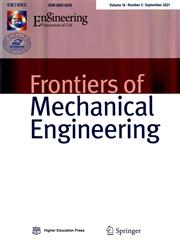ECN喷雾A条件下OME3−5和1-辛醇与类柴油十二烷混合物形成的比较
IF 4
2区 工程技术
Q1 ENGINEERING, MECHANICAL
引用次数: 0
摘要
为了能够充分利用再生燃料的潜力,有必要对传统燃料和再生燃料之间的差异进行全面的表征。在目前的工作中,我们比较了OME3−5和1-辛醇与柴油(如十二烷)在ECN喷雾A条件下单次和多次喷射的混合物形成情况。为了确定混合物,即质量分布和由此产生的空燃当量比,使用了基于实验数据的Naber和Siebers模型以及Musculus和Kattke模型。在这项工作中,测量了燃料喷雾的质量流速以及液体和气体穿透深度。结果表明,三种燃料在单次主喷射准稳态下的质量比几乎相同,而空燃当量比则大不相同。此外,多次喷射用于表明燃料影响喷射器的打开和关闭行为。在多次注射的瞬态情况下,会产生完全不同的混合物。总之,可以说OME3−5和1-辛醇显示出与十二烷明显不同的物理化学行为,不能简单地用作燃料中的一滴。因此,如果没有重大调整,简单的交换是不可能的。本文章由计算机程序翻译,如有差异,请以英文原文为准。
Mixture formation of OME3−5 and 1-Octanol in comparison with diesel-like Dodecane under ECN Spray A conditions
In order to be able to use the full potential of regenerative fuels, a comprehensive characterization is necessary to identify the differences between conventional fuels and regenerative fuels. In the current work, we compare OME3−5 and 1-Octanol with diesel-like Dodecane in terms of mixture formation under ECN Spray A conditions for single and multi-injection. To determine the mixtures, i.e., the mass distribution and the resulting air-fuel equivalence ratio, Naber and Siebers’ model as well as Musculus and Kattke’s model are used, which are based on experimental data. For this work, the mass flow rates and also the liquid and gaseous penetration depths of the fuel spray are measured. Results show that the mass ratios for the quasi-steady state of a single main injection for all three fuels are nearly the same, whereas the air-fuel equivalence ratios are very different. In addition, multiple injections are used to show that the fuel influences the opening and closing behavior of the injector. In the transient case of multiple injections, completely different mixtures result. In summary, it can be stated that OME3−5 and also 1-Octanol show a clearly different physio-chemical behavior from Dodecane and cannot simply be used as a drop-in fuel. Therefore, a simple exchange is not possible without major adaptations.
求助全文
通过发布文献求助,成功后即可免费获取论文全文。
去求助
来源期刊

Frontiers of Mechanical Engineering
Engineering-Mechanical Engineering
CiteScore
7.20
自引率
6.70%
发文量
731
期刊介绍:
Frontiers of Mechanical Engineering is an international peer-reviewed academic journal sponsored by the Ministry of Education of China. The journal seeks to provide a forum for a broad blend of high-quality academic papers in order to promote rapid communication and exchange between researchers, scientists, and engineers in the field of mechanical engineering. The journal publishes original research articles, review articles and feature articles.
 求助内容:
求助内容: 应助结果提醒方式:
应助结果提醒方式:


